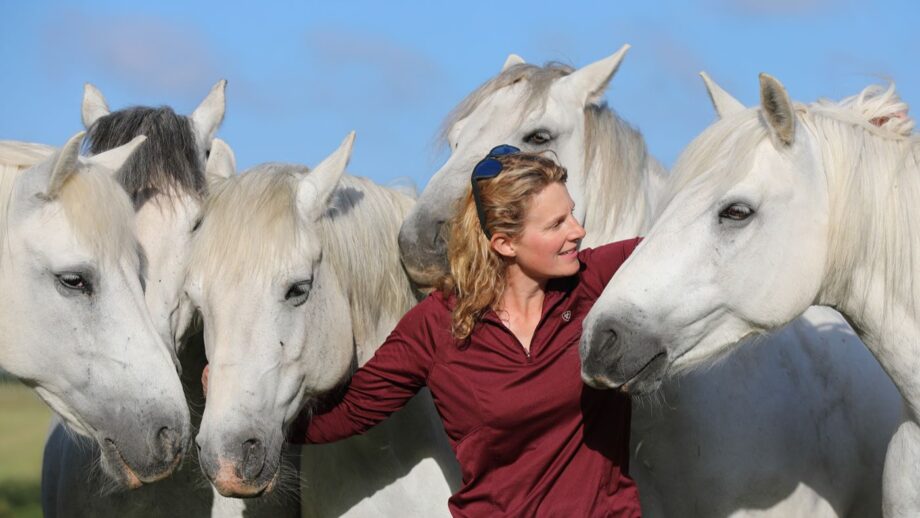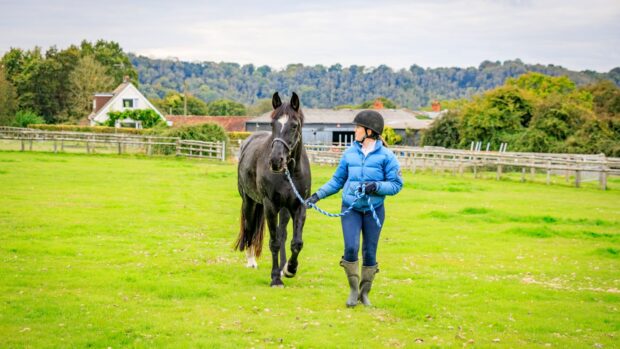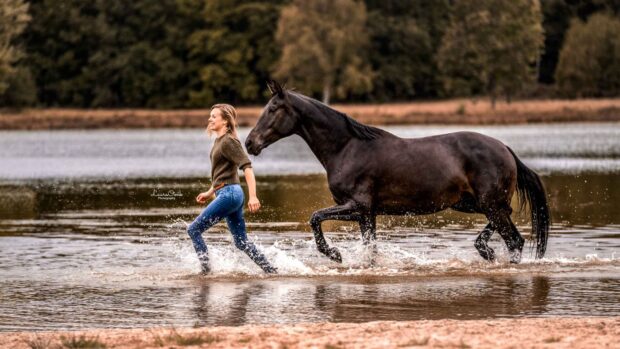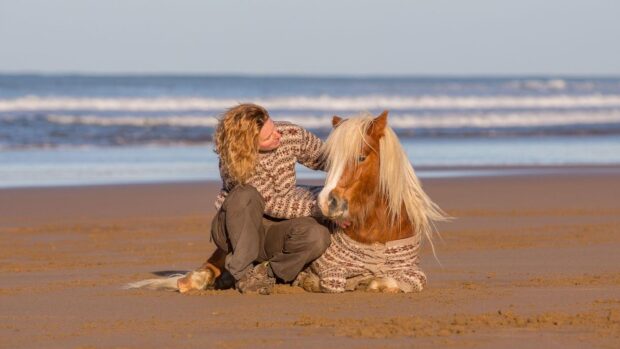Horse liberty training is a growing movement in the equestrian community, so how does it work? In essence, it is a method in which horses are handled and ridden with minimal training aids and equipment, such as a neck rope, bareback pad or schooling whip, or perhaps nothing at all. The horse operates free from restraint, with no ropes or tools to keep them engaged. Rather, the relationship between horse and handler is the “glue” that keeps them together.
There are many different interpretations of liberty training – perhaps as many as there are liberty trainers. Additionally, each trainer has their own philosophy. For example, while one trainer might view the roundpen as a setting for liberty work, another might consider a small space a training tool in itself. That said, many trainers are united in underscoring what makes for successful liberty training: communication.
“People talk a lot about connection, but I think it’s a buzzword,” says Ben Atkinson, liberty trainer, performer and pioneer of the Ben Atkinson Method.
“It bypasses what liberty really is for me – the art of communication. If liberty isn’t working or falls apart, it is a clear sign of poor or confusing communication between horse and human.”
Jump to:
- History and evolution
- Purpose and benefits
- Approaches
- – Teaching cues
- – Reading and responding to body language
- – Target work
- Dos and don’ts
Liberty training: history and evolution
The roots of liberty work are as far-reaching and diverse as its practice today. However, one definitive development in the liberty training story is the work of Philip Astley, an English 18th-century cavalry officer, and later Sergeant Major, in the King’s Light Dragoons. His interest in horses progressed into trick riding, and, later, the birth of the modern-day circus.
“His work was designed to showcase discipline and trust, but there’s the slight illusion of freedom there,” says Emma Massingale, liberty trainer, free rider and adventurer. “You have to ask, is the horse co-operating voluntarily, or is it shaped through circumstances? With the confines of a small circus ring, does the horse have options?”
Emma acknowledges another, more everyday source of liberty – the mutual understanding between a working horse and his handler.
“Take a 19th-century milkman,” she says. “He and his horse would make the same round every day. The horse would learn where to stop, where the best hedgerows were to browse from, how to be calm when other horses passed and so on. Pretty soon, the milkman would barely need to drive the cart anymore, much less tie his horse at each house. The horse could take ownership of his own tasks because there’s mutual trust that each will respect and follow the routine with minimal prompts, if any.”
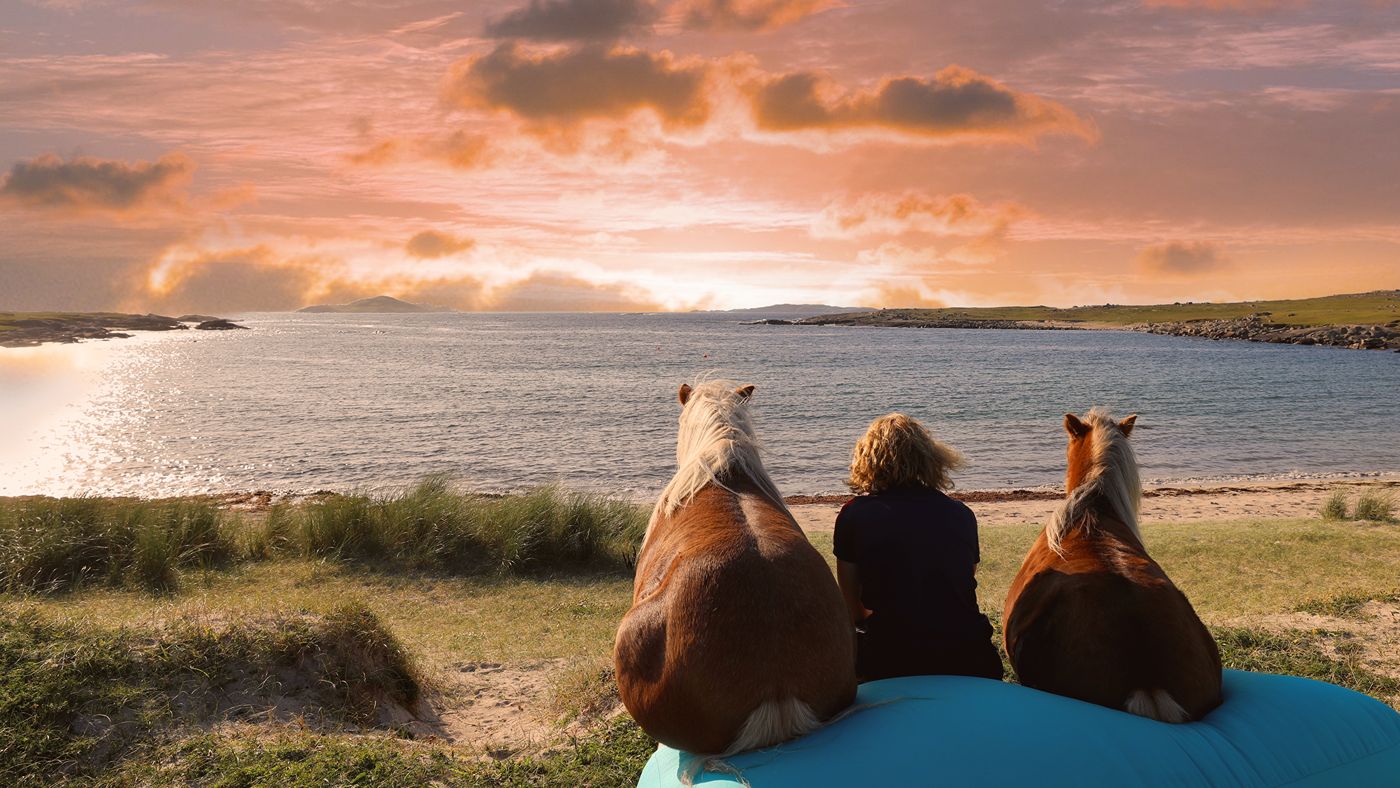
Emma Massingale shares a bean bag with her Shetlands. Credit: Jeremy Colwill
The origins of liberty training aren’t confined to the UK. Branches of modern liberty, especially in the US, find their roots in the California vaquero tradition. The vaqueros were Spanish cowboys who came to California in the 16th century as part of Spain’s colonisation of the Americas. In a nutshell, they trained horses slowly and meticulously, often bitless, prizing subtle communication and training horses to respond to the lightest touch.
Other traditions are rooted in studying equine behaviour and body language in their natural environment and replicating these observations in training. Renowned US natural horsemanship trainer Monty Roberts spent much of his youth watching wild mustangs near his Nevada home and, from his findings, developed his signature Join-up technique. This, in turn, inspired other trainers such as Kelly Marks, who together with Monty founded the Intelligent Horsemanship movement.
Today, liberty is seen as an alternative way to train that champions communication, bond between horse and handler and equine wellbeing. Trainers note that there is a growing appetite for liberty training among a wider audience.
Yvet Blokesch, founder of Feather Light Academy, explains: “When I started, I was the weird girl doing groundwork with horses. People hadn’t really heard of it. Even 10 years ago it was rare to see.
“Now, with social media and courses online, it’s becoming way more popular.
Emma adds: “People seem to be having a look around for alternatives rather than sticking to traditional methods – it’s a good thing.”
Purpose and benefits
There is no one end result when it comes to liberty training. Some trainers can use liberty to teach high-level lateral and collection movements, such as half-pass and piaffe, while others work with entire teams of horses at liberty. For Emma, the mutual understanding and bond between horse and handler is the most important result.
“My passion is going out with my team at liberty into any environment, with many distractions that don’t influence the connection with my horses,” she says. “When I take them up onto the moors, they aren’t tempted to go off with the wild ponies or to graze. Our relationship is the most enticing thing.”
For Ben, one key benefit for the horse is an owner who’s willing to listen.
“Observing, reading and adapting to the horse’s actions and expression gives the horse much more of a voice than traditional styles of equine sport,” he remarks. “Tradition relies on verbal and tactile cues only, and often makes seeing and adapting to body language much more challenging.
“Broadening our equine ‘vocabulary’ in this way means that, once we’re confident and competent, daily life becomes easier,” adds Ben. “From leading to and from the field to standing at the mounting block or entering new environments, liberty arms us with the tools we need to guide our horses like never before.”
Ben warns that liberty shouldn’t be seen as a cure-all.
“It’s not a silver bullet to fix all issues. Nor is it a magical sport that allows out-of-work horses to make a miraculous comeback. I think these false perceptions come from the very ‘Instagrammable’ side of the liberty world that gives hope to people who feel lost. Liberty is just another option when it comes to equine sport.”
Yvet explains that liberty unlocks a high level of trust because a well-practised trainer can show horses that their signals are being read.
“Whenever I’m training a young or new horse, I don’t ask anything of them,” she says. “First, I show that we can communicate in a way that’s familiar, responding to small signals that let them understand that it has meaning to me. It makes them feel good, they are calm and relaxed with you, and that’s where the connection comes from; that’s why he wants to stay connected with you.”
She’s also witnessed horses become more outgoing.
“With a shy horse, you can’t just go ahead and play with them,” she explains. “They don’t know what to do with all that energy.
“But if you listen to their signals very carefully, you see the moments where they open up and become curious or expressive. You can encourage that. Then, they start to feel free to express themselves, and working with you feels good.”
Yvet’s practice sees her teach horses self-carriage and dressage movements from the ground – all bitless.
“Always needing contact through the rein with a bit never made much sense to me,” she says. “So, I don’t teach horses on the bridle then take the bridle away; I teach new things on the neck rope.
“You can prepare horses for everything on the ground,” she continues. “You let them feel what it’s like to keep their own body in balance. And when they get self-carriage, I always give my hands or reins to the horse, even if it’s just for a split second. This helps him feel like ‘oh yes, I can do this myself’.
“It’s so beneficial for whatever you want to do under saddle.”
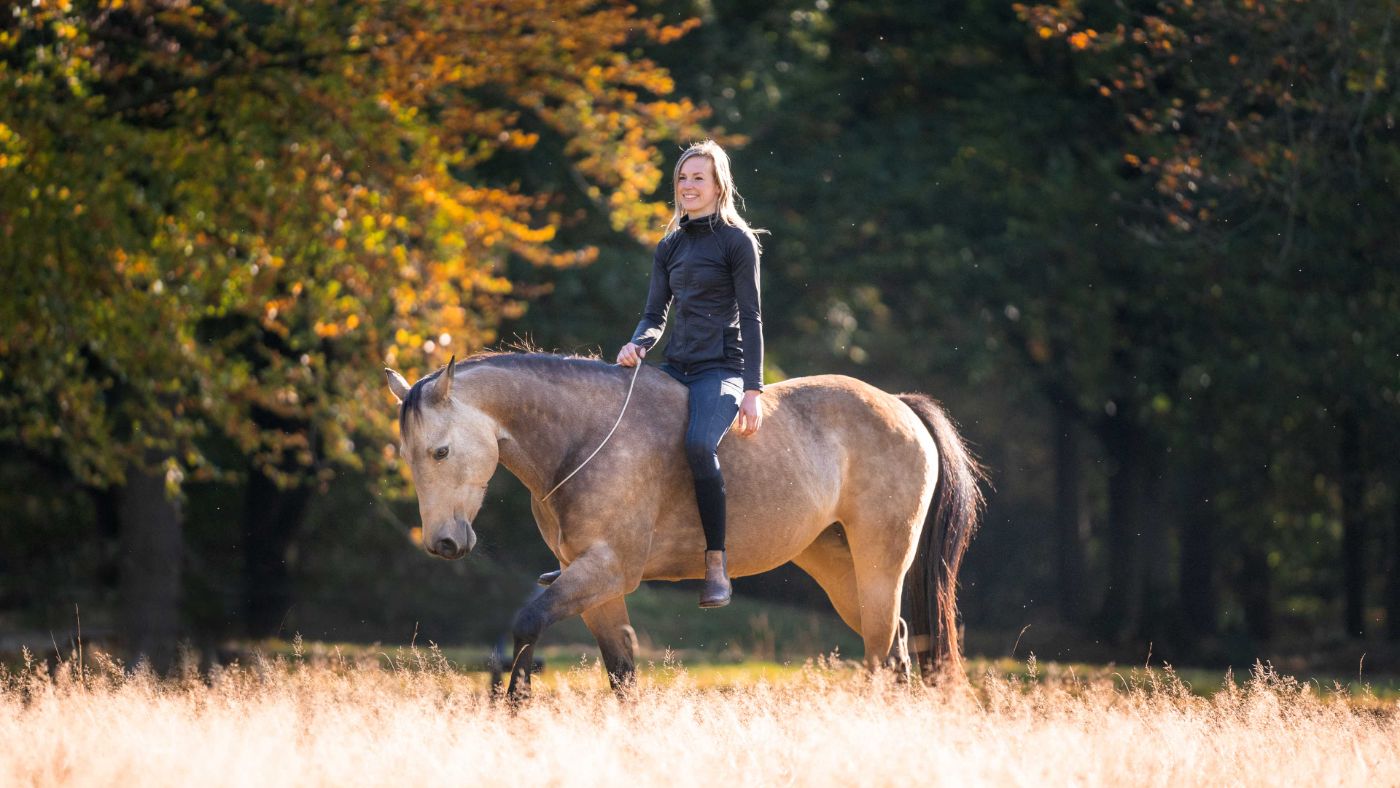
Yvet Blokesch of Feather Light Academy prefers to teach new movements on the neck rope rather than using a bridle. Horse & Hound recommends wearing a safety helmet when mounted. Credit: Laura Oonk
Approaches
Just as many different liberty training philosophies coexist, so too do trainer methods. That’s not to say they are all mutually exclusive, and trainers will use a combination of tools depending on the horse, the environment or desired result. We discuss some of our experts’ approaches below…
Teaching cues
Much of Emma’s liberty training takes place in open fields and wild spaces. What keeps her liberty team engaged? A vocabulary of cues that not only refer to specific commands, but “yes” and “not quite”, too.
“We think nothing of training our dogs, and really there are so many similarities,” she adds. “We teach dogs verbal cues, hand signals and body language. All of this allows you to communicate mutually, teaches them how to work with you and keeps their attention.”
Emma explains her cue-teaching method in this introduction to liberty training. However, in a nutshell, teaching cues uses a horse’s natural pattern-learning capabilities to learn new skills.
“I don’t like to use ‘no’, it’s so negative,” she explains. “Horses love to be told they’re great, so a ‘no’ can derail their motivation, which is exactly what we don’t want for liberty.
“Instead, I use a brief ‘shh’ to say, that’s not quite right. It encourages them to keep searching for the answer.”
Reading and responding to body language
Ben Atkinson’s method forces the handler to be acutely aware of the horse’s whole body – as well as their own.
“Good liberty is about translating our desire to the horse via tactile, visual, verbal, body language and footwork signals,” he explains. “In return, we employ our powers of observation and perception to analyse the horse’s body language and signals. These signals let us interpret the horse’s confidence, competence and consent, and we can adapt our communication style accordingly.”
Ben’s signals in action take many forms. A slight turn of the body might tell the horse to change direction, or the brush of a whip might ask for a bow. What’s clear is that Ben can produce the full range of equine motion from the ground, totally at liberty.
“Another huge positive for liberty-trained horses is the opportunity to learn movements,” he adds. “They can learn the simplest canter transition all the way to canter pirouettes without the burden of a rider’s weight or variable balance.”
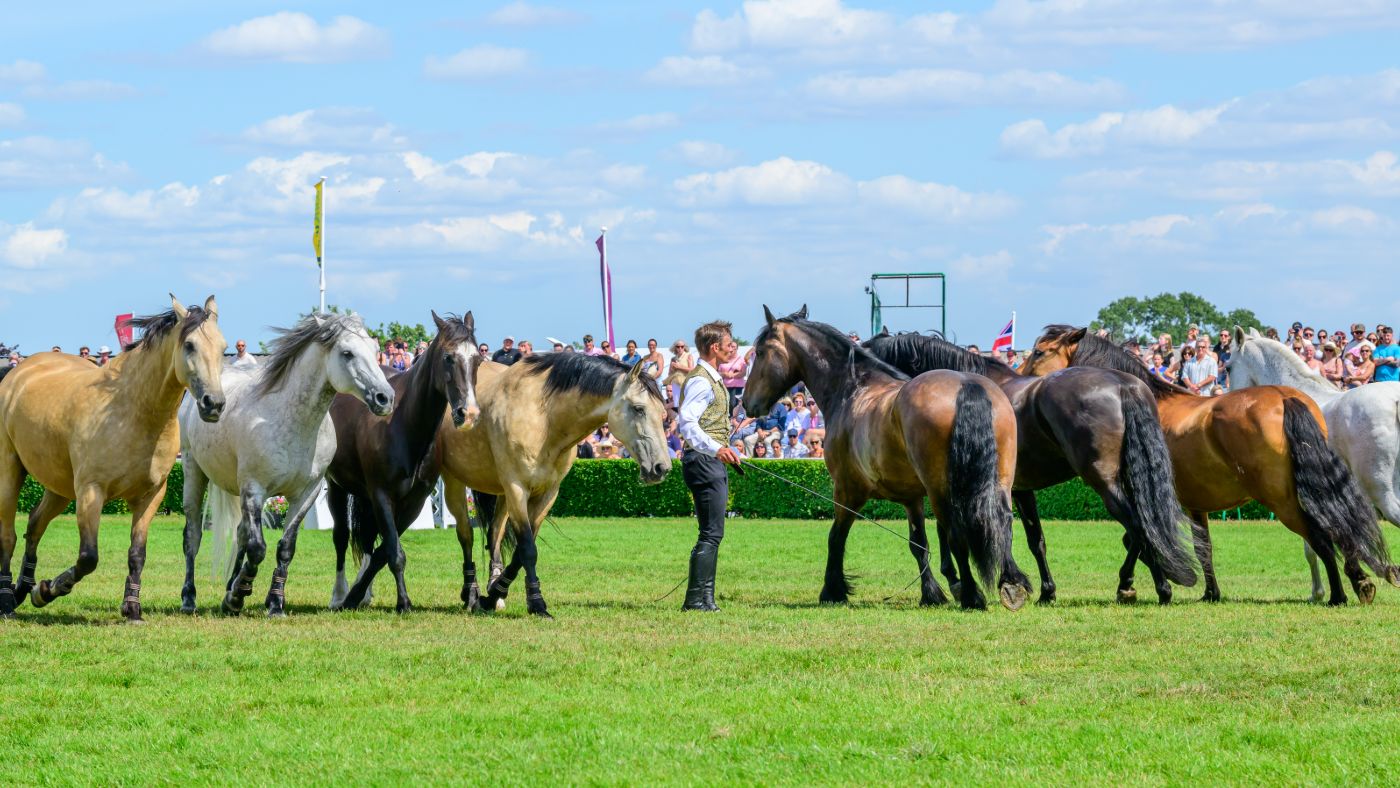
Ben Atkinson performing with his team. Credit JSH Photography
Target work
One aspect of Yvet’s work is to encourage the horse to use targets.
“These aren’t physical targets that I hold,” explains Yvet. “But when I go further into liberty work, I’ll use my belly or my shoulder as a target, or a point for the horse to hook on to and move towards.
“It becomes something that they’re searching for, a focus. I can then ask for them to circle around me at liberty, or learn lateral movements, anything like that. They understand what to aim for, and it makes them eager to work with me.”
Liberty training: dos and don’ts
If you’re looking to start beginner liberty work, our experts share their dos and don’ts to help you make a success of your first sessions.
“A pitfall I often see is people getting so obsessed with learning liberty, that it becomes all about the person and not about the horse,” says Emma. “Turn your obsession to your relationship with your horse and embrace the journey you go on.
“You might get faster results in a roundpen, because a horse doesn’t really have any other option. It’s fine to work in a roundpen, but it’s important to respect the power that space has. Check in with yourself, your practice and aim to work in a variety of spaces – the wilder, the better.”
Ben advises matching the level of intensity to the horse.
“The trainer dictates the intensity of liberty training, like any equine pursuit,” he explains. “A 21-year-old arthritic heavy horse shouldn’t be asked to learn piaffe-passage transitions at liberty.
“Those wishing to practise liberty with horses with injury history or in the horse’s twilight years should consider the same things as a rider,” he continues. “For example, you could make circles larger and turns shallower, while being conscious of challenging terrain. Just because the horse is loose with no tack or rider doesn’t mean its body is under zero strain.”
When done thoughtfully, groundwork and liberty are wonderful options for younger and older horses.
“Personally, I find the benefits of liberty for general handling, loading, riding and carriage driving highly advantageous,” adds Ben. “Do have a go; don’t write it off before you’ve tried it. Do expect it to be confusing and humbling at first, and don’t let one bad session let you lose hope. Don’t rush, but keep going.”
Yvet’s also mindful of the tempting pull of progress.
“Don’t go towards that teaching phase too quickly, because you first want to have that initial connection coming from the horse,” she says. “You want the horse choosing to be with you, not made to stick to you.
“Do be really aware of all the signals that your horse is giving,” she adds. “When you work with your horse, you have to be very aware of what he’s looking at, where his ears are pointing. I always walk in the opposite direction to where the horse is looking. This automatically draws him with you again.”
Working with horses at liberty is a dream for many riders and, while it won’t happen overnight and progress is rarely linear, the fruits of your labour could be sweet indeed.
Did you enjoy this article? You may also like to read…

Sailing, woolly jumpers and local herds: Shetlands go on exciting adventure
The ponies travelled around their native Shetland Islands with trainer Emma Massingale

‘The best feeling I have ever had’: Emma Massingale makes great progress in island challenge
Read about the equine trainer's progress since she took on a unique challenge three weeks ago
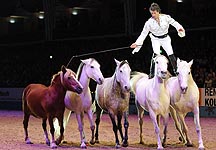
The secrets of Jean-François Pignon
Showman Jean-François Pignon explained a totally different kind of training at the Global Dressage Forum in the Netherlands
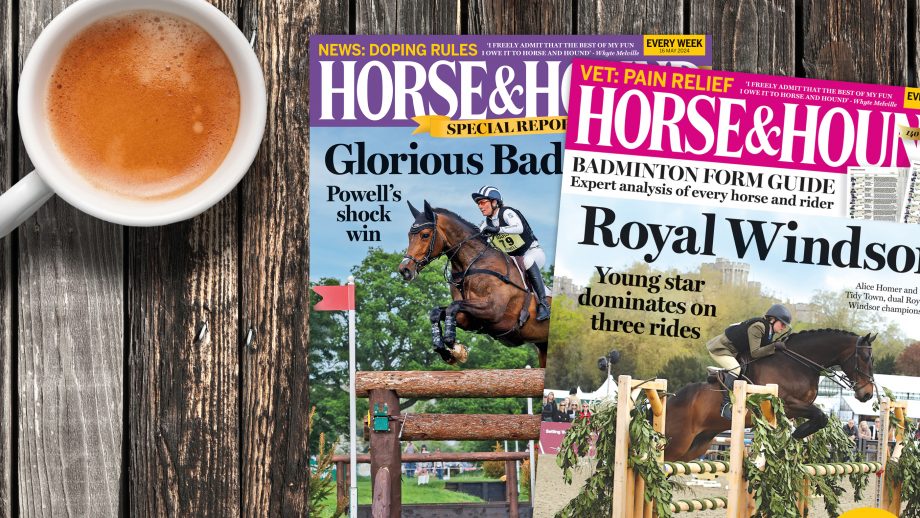
Subscribe to Horse & Hound magazine today – and enjoy unlimited website access all year round

